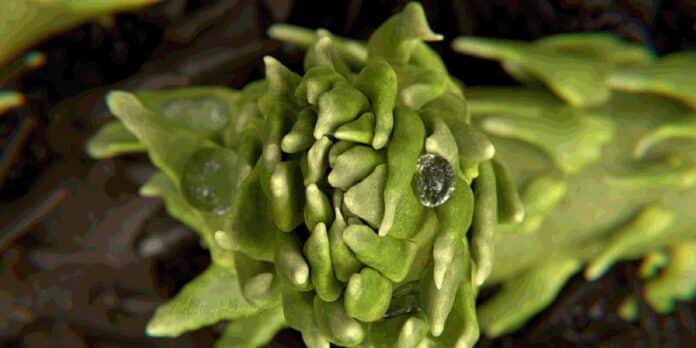A 3D model of a 407-million-year-old plant fossil has rewritten the history of leaves and provided new insights into the amazing patterns found in plants.
The study, led by University of Edinburgh paleontology Ph.D. student Holly-Anne Turner, discovered that the arrangement of leaves into characteristic spirals, ubiquitous in nature today, was rare among the most ancient land plants that initially occupied the earth’s surface. Instead, the ancient plants were discovered to have a different spiral, calling into question a long-held idea concerning the genesis of plant leaf spirals.
This supports a long-held view regarding the origin of plant leaf spirals, which suggested that they arose along two distinct evolutionary pathways.
Spirals are common in nature, whether the huge swirls of a cyclone or the intricate spirals of the DNA double-helix, and most may be characterized by the renowned mathematical series the Fibonacci sequence.
Spirals are widespread, with Fibonacci spirals accounting for over 90% of all spirals. These spirals can be seen in sunflower heads, pinecones, pineapples, and succulent houseplants, which all have them in their flower petals, leaves, or seeds.
For generations, scientists have been baffled by Fibonacci spirals, popularly known as nature’s secret code. Yet, their evolutionary genesis has largely gone unnoticed.
Fibonacci spirals are thought to be an old trait that evolved in the earliest land plants and became well-conserved in plants based on their extensive distribution.
Many of nature’s most effective and beautiful patterns are built upon the Fibonacci sequence, which bears Leonardo Fibonacci’s name.
Scientists’ knowledge of Fibonacci spirals in land plants has been completely altered by the discovery of non-Fibonacci spirals in the fossilized clubmoss Asteroxylon machine, which dates back 407 million years.
According to the research, non-Fibonacci spirals, uncommon in modern plants, were most frequently used to organize the leaves and reproductive components in Asteroxylon Mackie. This alters how scientists view Fibonacci spirals in land plants and suggests that the two branches of the evolution of leaf spirals split apart.
Holly-Anne Turner said, “The clubmoss Asteroxylon machine is one of the earliest examples of a plant with leaves in the fossil record. Using these reconstructions, we have been able to track individual spirals of leaves around the stems of these 407-million-year-old fossil plants. Our analysis of leaf arrangement in Asteroxylon shows that very early clubmosses developed non-Fibonacci spiral patterns.”
The clubmoss fossil Asteroxylon Mackie, one of the earliest species of leafy plants, contains the first 3D representations of leafy shoots to be created using digital reconstruction techniques.
The remarkably well-preserved fossils were discovered in the Rhynie Chert, a Scottish geological deposit close to the settlement of Rhynie in Aberdeenshire.
The location preserves proof of some of the planet’s earliest ecosystems, when land plants first appeared and began to progressively cover the rocky surface of the globe, making it habitable.
The research found that non-Fibonacci spirals, uncommon in modern plants, were more frequently used to organize the leaves and reproductive components in Asteroxylon Mackie.
This changes how scientists think about terrestrial plants’ Fibonacci spirals. It suggests that non-Fibonacci spirals were frequently found in prehistoric clubmosses and that the genesis of leaf spirals had two different routes.
Compared to other main groupings of plants today, such as ferns, conifers, and flowering plants, the leaves of ancient clubmosses had an altogether different evolutionary history. Working with digital artist Matt Humpage, the 3D model of the Asteroxylon machine, which has been extinct for almost 400 million years, was constructed utilizing digital rendering and 3D printing.
The research was funded by UK Research and Innovation (UKRI), The Royal Society, and the German Research Foundation.
Journal Reference:
- Matthew Humpage, Holly Anne Turner, et al. Leaves and sporangia developed in rare non-Fibonacci spirals in early leafy plants. Science. DOI: 10.1126/science.adg4014
